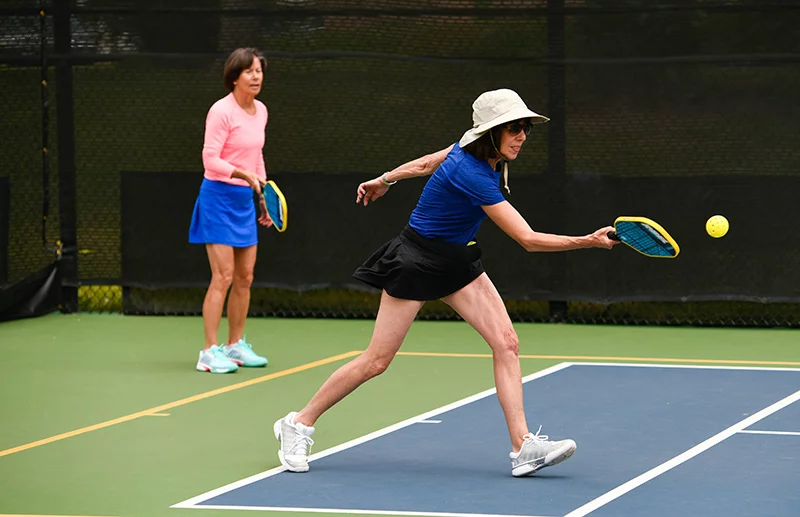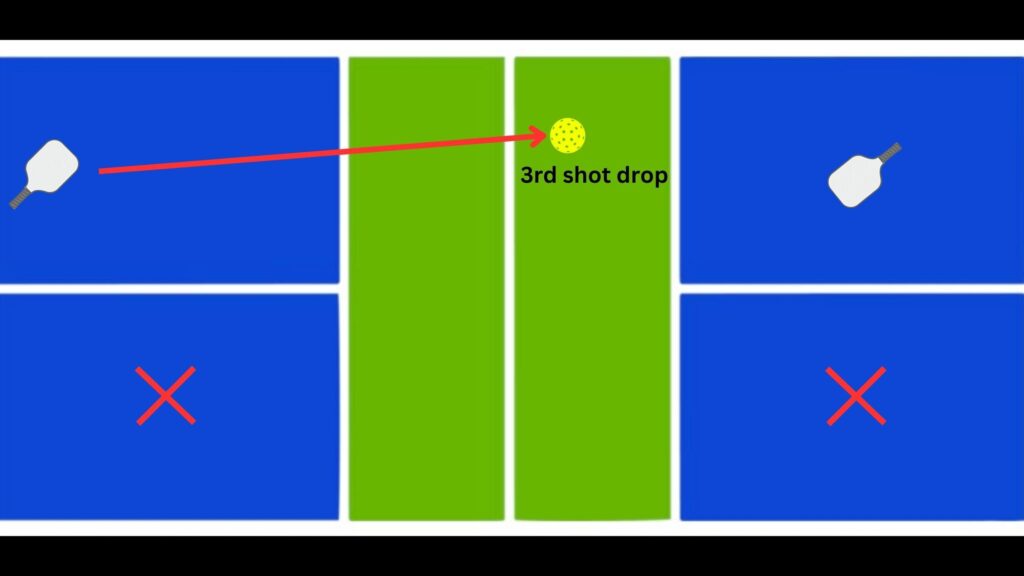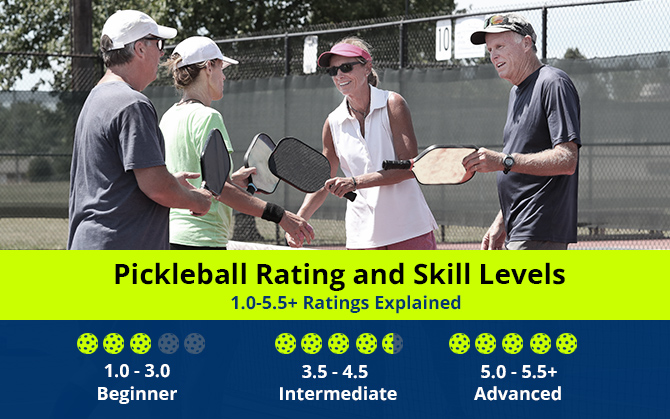Pickleball looks like a combination of tennis, badminton, and table tennis, played on a smaller court with a paddle and a plastic ball. Pickleball is a fast-paced racket sport that combines elements of tennis, badminton, and table tennis.
It is played on a smaller court with a lower net than traditional tennis, using a solid paddle and a plastic ball with holes. The objective of the game is to hit the ball over the net and into the opponent’s court, aiming to score points by making the ball bounce twice before the opponent can return it.
It can be played in singles or doubles format, and the sport is known for its friendly and inclusive community. With its unique rules and dynamic gameplay, pickleball has gained popularity among people of all ages and skill levels.
Origins Of Pickleball
Pickleball, often described as a combination of tennis, badminton, and table tennis, has an interesting history. The game was invented in the mid-1960s and has since gained immense popularity, especially among older individuals seeking a low-impact yet engaging recreational activity.
Invention Of The Game
Pickleball was introduced by Joel Pritchard, a congressman from Washington state, and Bill Bell, a businessman. The idea for the game came about when the two friends were unable to find the equipment to play their usual game of badminton, which led them to improvise using a set of ping-pong paddles and a perforated plastic ball. The game quickly caught on among their family and friends, leading Pritchard and Bell to develop official rules and equipment for pickleball.
Combining Different Sports
The initial invention of pickleball was a result of blending various elements from tennis, badminton, and ping-pong. The creators ensured that the game accommodated the skills and abilities of players from different backgrounds, making it accessible and enjoyable for people of all ages and fitness levels. The unique combination of sports has contributed to pickleball’s widespread appeal and success as a recreational pastime.
Pickleball Equipment
When it comes to enjoying the game of pickleball, having the right equipment can make all the difference. From the paddle you choose to the type of ball you play with, each piece of equipment plays a crucial role in your overall experience on the court. Let’s take a closer look at the different types of pickleball equipment!
Paddle Types
Choosing the right paddle is essential to your performance on the pickleball court. Paddles come in various shapes, sizes, and materials, so it’s important to find one that suits your playing style and preferences. Here are some common types of pickleball paddles:
| Paddle Type | Description |
|---|---|
| Graphite Paddles | Lightweight and durable, these paddles offer great control and maneuverability. |
| Polymer Paddles | Known for their excellent touch and feel, polymer paddles provide a softer surface for enhanced control. |
| Composite Paddles | Combining the best of both worlds, composite paddles offer a blend of power, control, and durability. |
Keep in mind that paddle weight, grip size, and shape can also impact your gameplay. It’s a good idea to try out different paddles to find the one that feels comfortable and optimizes your performance.
Ball Types
The type of ball you use can greatly affect the pace and playability of the game. Pickleball balls come in different materials and colors, each offering its own unique characteristics. Here are some common types of pickleball balls:
- Outdoor Balls: These balls are specifically designed for outdoor play, featuring a harder construction for improved durability against rough surfaces.
- Indoor Balls: Indoor balls are typically softer and have smaller holes, allowing for easier control and slower gameplay.
- Onix Pure 2 Balls: Considered the gold standard by many players, Onix Pure 2 balls offer a good balance of durability, control, and playability.
Choosing the right ball depends on where you’ll be playing and your personal playing preferences. Outdoor or indoor, each type of ball provides its own unique playing experience.
Pickleball Court
A pickleball court is where the action happens, bringing players together for an exciting game of skill and strategy. Understanding the dimensions and layout of the court is crucial for players to effectively navigate the game. Let’s take a closer look at the pickleball court dimensions and the layout that makes this sport uniquely enjoyable.
Court Dimensions
The pickleball court dimensions are specifically designed to create a fair and balanced playing environment. The court measures 20 feet wide and 44 feet long for doubles play, while singles play occupies a narrower 20 feet width and a slightly shorter 42 feet in length. To maintain a consistent experience, these dimensions are standardized by the USA Pickleball Association (USAPA) and the International Federation of Pickleball (IFP).
In addition to the overall size, the court is divided into different sections using lines that serve various purposes. A standard pickleball court features baselines, sidelines, a centerline, and a non-volley zone. Understanding the significance of each line helps players make strategic shots and minimize errors on the court.
Court Layout
The layout of the pickleball court is thoughtfully designed to ensure fair gameplay and promote balanced competition. The court is divided into separate sides, each for the service area and the receiving area. The presence of a net in the middle separates the two sides, serving as a testament to the players’ skills and movements during rallies.
Here’s a breakdown of the different sections within the court:
- Baseline: The baseline marks the far ends of the court and serves as the boundary for serves and returns. Players must stay behind the baseline during their shots, ensuring a fair play.
- Sidelines: The two sidelines run parallel to the net, defining the lateral boundaries of the court. Shots that land outside these lines are considered out of bounds.
- Centerline: The centerline runs perpendicular to the net, dividing the court into two equal halves. It serves as a reference point for positioning during serves and provides guidance for ball placement during rallies.
- Non-Volley Zone: Also known as the kitchen, the non-volley zone is a 7-foot section on each side of the net, starting from the net itself. Players cannot enter this area during volley shots, preventing overly aggressive play near the net.
The pickleball court layout encourages strategic gameplay, requiring players to position themselves effectively and make calculated shots within the court’s boundaries.
Understanding the dimensions and layout of the pickleball court is essential for players to excel in this fast-paced sport. By adhering to these standardized dimensions and familiarizing themselves with the court’s sections, players can fully immerse themselves in the exhilarating world of pickleball.
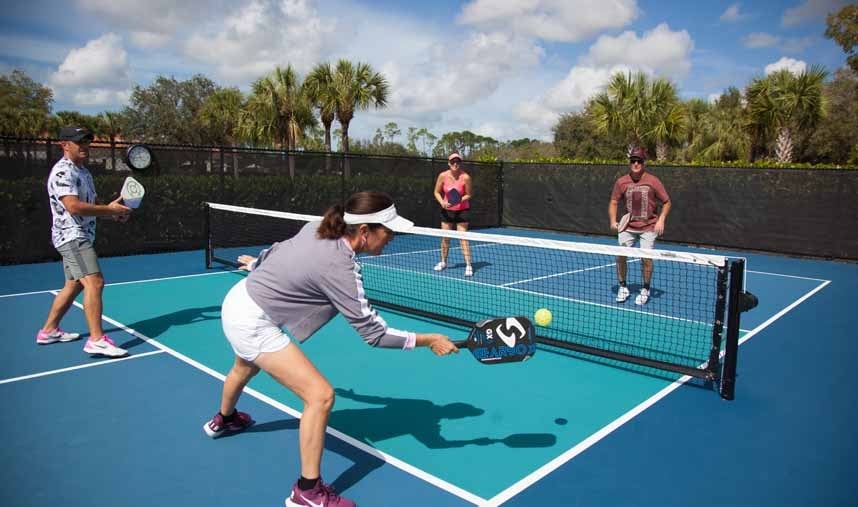
Credit: www.ussportscamps.com
Rules And Scoring
Pickleball is a fast-paced and engaging sport that combines elements of tennis, badminton, and table tennis. Understanding the rules and scoring system is crucial for anyone looking to enjoy the game. In this section, we will delve into the serving rules, inbound and out-of-bounds guidelines, and the scoring system of pickleball.
Serving Rules
The serving player must stand behind the backline and hit the ball diagonally to the opponent’s service court. The serve must be made underhand and the contact with the ball should be below the waist. Players also need to ensure that the ball bounces once in the opponent’s court during the serve.
Inbound And Out-of-bounds
In pickleball, a ball landing on the lines is considered inbound. If the ball lands outside the lines, it is deemed out-of-bounds. If the ball hits the non-volley zone lines during the serve, it is considered a fault.
Scoring System
The scoring in pickleball is similar to volleyball. A point can only be scored by the serving team. Games are typically played to 11 points, and a team must win by at least two points. Furthermore, during each game, the serving team will alternate sides when a point is scored.
“` I hope the information provided matches your requirements.Pickleball Gameplay
In pickleball gameplay, players engage in singles or doubles matches, each with their own unique dynamics and strategies. Understanding the difference between singles and doubles play can help players tailor their approach for maximum success. Additionally, mastering the basic shots and strategies in pickleball is essential for players to excel in this fast-paced and thrilling sport.
Singles Vs Doubles
When playing pickleball, individuals have the option to compete in singles matches or to team up with a partner for doubles matches. Singles matches are intense one-on-one battles that require agility, speed, and precision. They put a greater emphasis on court coverage and strategic shot placement, as players have more space to exploit and fewer opportunities for teamwork.
Doubles matches, on the other hand, involve teams of two players on each side of the court. These matches often prioritize teamwork, communication, and coordination. With four players on the court, the pace can be faster, and players have the advantage of being able to cover more ground and strategize together. Doubles matches are characterized by quick exchanges, swift movements, and effective shot placement.
Basic Shots And Strategies
Mastering the fundamental shots and strategies is crucial for players to thrive in pickleball. These shots provide the foundations from which players can develop more advanced techniques and tactics. Here are the essential shots every pickleball player should be familiar with:
| Shot Type | Description |
|---|---|
| Serve | A shot that begins the point, requiring accuracy and consistency. |
| Return of Serve | The response to an opponent’s serve, aiming to gain an offensive advantage. |
| Dink | A soft, controlled shot close to the net, often used to set up an offensive opportunity. |
| Volley | A shot hit in mid-air before the ball touches the ground, allowing for quick and aggressive play. |
| Third Shot Drop | A shot executed by the serving team after the return of serve, typically a soft shot that lands in the non-volley zone. |
| Smash | A powerful overhead shot aimed to put the ball past the opponent quickly. |
| Lob | A high shot that arcs over the opponents, forcing them back from the net and creating an opportunity for offensive play. |
| Block | A defensive shot aimed at redirecting the opponent’s shot, often used close to the net. |
These shots allow players to adapt to different situations, exploit their opponents’ weaknesses, and create winning opportunities. By combining these shots strategically, players can maintain control of the game, outmaneuver their opponents, and seize victory.
In conclusion, understanding the dynamics of singles and doubles play in pickleball, as well as mastering the basic shots and strategies, are key elements for players to thrive in this exhilarating sport. Whether competing individually or with a partner, developing a diverse skill set and tactical gameplay is essential for success in the fast-paced world of pickleball.
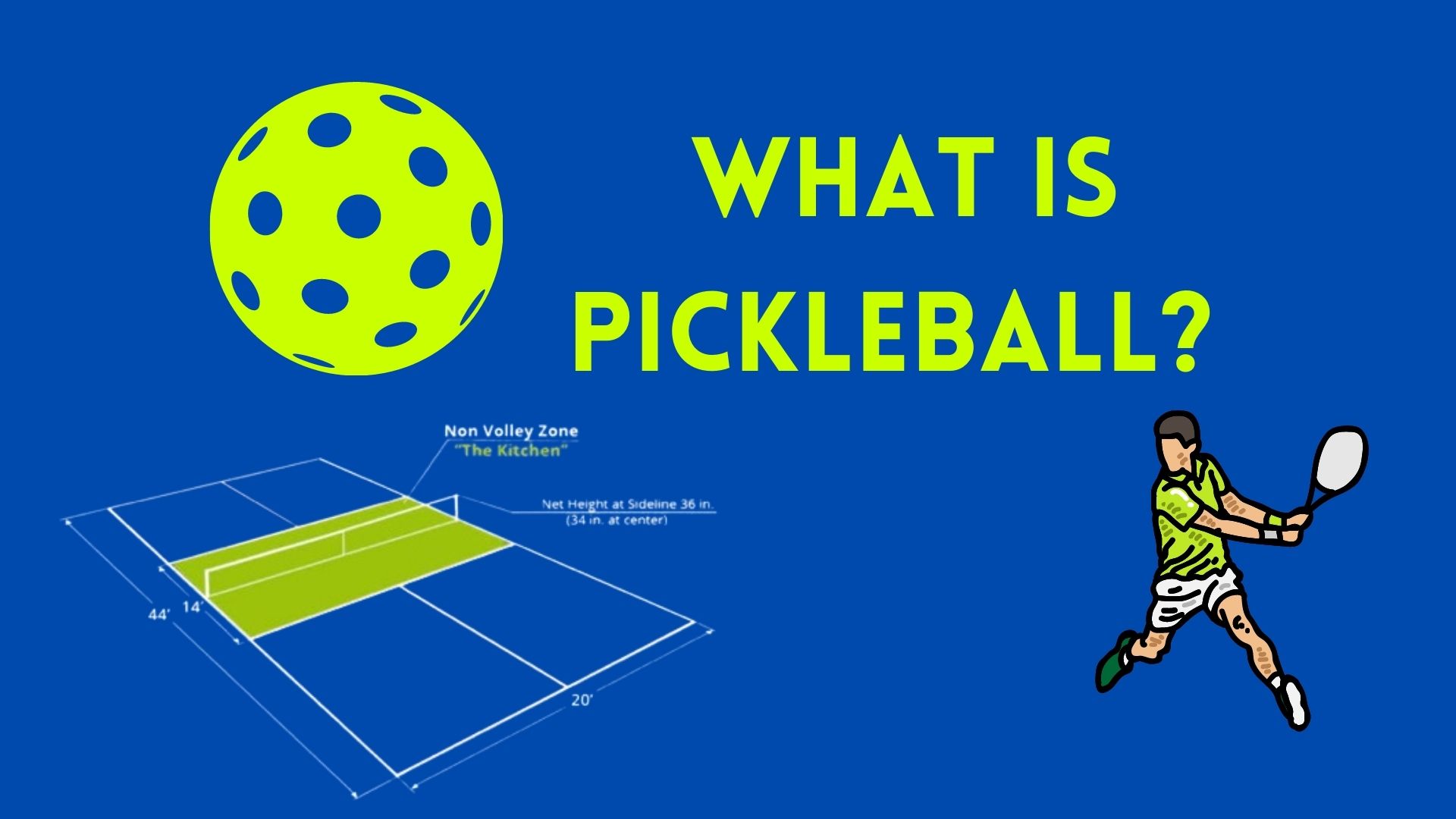
Credit: poolesvilleseniors.org
Pickleball Community
Welcome to the vibrant and inclusive world of pickleball! The pickleball community is like no other, bringing together people from all walks of life who share a common passion for this dynamic sport. Whether you’re a seasoned player or new to the game, the welcoming pickleball community offers a supportive and friendly environment where everyone can enjoy the thrill of the game.
Tournaments And Events
Pickleball tournaments and events are a highlight of the pickleball community. These gatherings not only showcase the competitive spirit of the players but also provide an opportunity for players to come together, learn from each other, and forge new friendships. Whether you’re a spectator or a participant, the energy and excitement of these events are contagious.
Tournaments offer players a chance to test their skills and take part in friendly rivalry. From local club tournaments to larger national and international competitions, the pickleball community has a variety of events to cater to different skill levels. It’s not just about the competition, though. Tournaments also serve as a platform for players to connect with like-minded individuals, share experiences, and celebrate their love for pickleball.
Growing Popularity
Over the past few years, pickleball has been gaining immense popularity, and the pickleball community is growing rapidly. This fast-paced sport is attracting players of all ages and skill levels, making it a truly inclusive game. With its easy-to-learn rules and shorter court dimensions, pickleball has become a favorite sport for many people looking for an active and engaging activity.
As the pickleball community continues to expand, more opportunities are arising for players to connect and engage with fellow enthusiasts. Local pickleball clubs, online forums, and social media groups dedicated to pickleball have mushroomed, creating a sense of camaraderie among players. Whether it’s sharing tips, organizing meetups, or discussing the latest pickleball gear, these communities foster a supportive environment that encourages everyone to achieve their best on and off the court.
With the growing popularity of pickleball, there is a constant buzz around the sport. New players are eager to join the pickleball community, and seasoned players are always looking for ways to improve their skills. This shared enthusiasm and passion for the game contribute to the vibrant and welcoming atmosphere that defines the pickleball community.
Benefits Of Pickleball
Pickleball offers a unique blend of tennis, badminton, and ping-pong, played on a smaller court. It is a fast-paced and engaging sport suitable for all ages, providing benefits such as improved coordination, enhanced cardiovascular health, and social interaction.
Pickleball is a fantastic recreational activity that offers a myriad of benefits for physical, mental, and social well-being. Seniors, adults, and children can all enjoy the advantages of playing this game, making it an inclusive and accessible sport for all. Let’s take a closer look at the specific benefits of engaging in pickleball.Physical Health Benefits
Playing pickleball provides a range of physical health benefits, as it combines elements of tennis, badminton, and table tennis to create an engaging and active experience. This sport promotes cardiovascular health by requiring players to move around the court, engaging in quick, dynamic movements. Moreover, the nature of the game also improves agility, balance, and coordination, making it an effective way to enhance overall physical fitness.Social And Mental Benefits
Pickleball is not just beneficial for physical health; it also provides valuable social and mental benefits. The sport fosters social interaction as players engage in friendly competition and socialize with others in a supportive and inclusive environment. Additionally, the mental benefits of pickleball are notable, as the game requires focus, concentration, and quick decision-making, helping to keep the mind sharp and active. Moreover, the camaraderie and sense of community that pickleball fosters can contribute positively to mental well-being.:max_bytes(150000):strip_icc()/how-to-play-pickleball-tips-for-getting-started-5119213_final-bf80f980ffce4deca59039e2d83a1a1a.png)
Credit: www.verywellfit.com
Frequently Asked Questions For What Does Pickleball Look Like
What Does A Pickleball Look Like And What Is It Made Of?
A pickleball is a small, perforated plastic ball similar to a wiffle ball. It is made of durable materials for outdoor play.
What Is Pickleball And How Is It Played?
Pickleball is a paddle sport that combines elements of tennis, badminton, and ping-pong. It is played on a court with a net. Players use solid paddles to hit a perforated ball over the net. The game can be played as singles or doubles.
What And Why Is It Called Pickleball?
Pickleball is a sport that combines elements of tennis, badminton, and ping pong. It gets its name from the inventor’s dog, Pickles, who would chase after the ball during their matches. The game quickly gained popularity for its fun and exciting gameplay.
What Is Pickleball And Why Is It So Popular?
Pickleball is a popular sport that combines aspects of tennis, badminton, and ping pong. It is played with a paddle and a perforated plastic ball on a smaller court. Its popularity stems from its ease of learning, low-impact nature, and social appeal.
Conclusion
In essence, pickleball is a dynamic and fast-paced sport that can be enjoyed by people of all ages and skill levels. With its growing popularity, it’s clear that pickleball is here to stay. Whether you’re a seasoned player or a curious newcomer, there’s something truly special about the game that keeps enthusiasts coming back for more.
Neil jacobson is an avid Pickleball enthusiast, writer, and coach dedicated to sharing the joy and intricacies of the sport. With 6 years of experience on the court and a passion for teaching, Courtney brings a unique perspective to his writing, offering practical insights and strategies for players of all levels. As a certified Pickleball coach, his mission is to inspire and empower individuals to excel in the game while fostering a sense of community within the Pickleball world. Through his articles, guides, and coaching sessions, Neil aims to elevate the playing experience and share the infectious enthusiasm that defines the Pickleball community.

